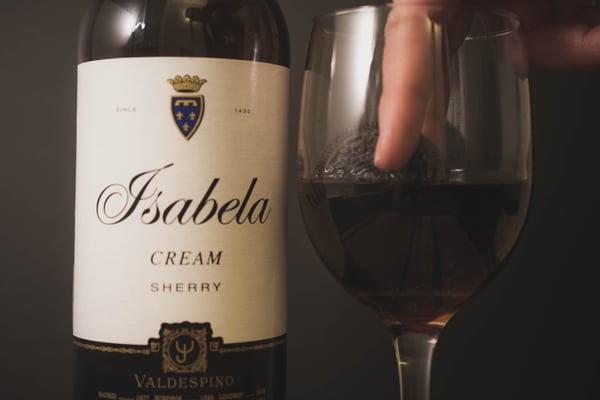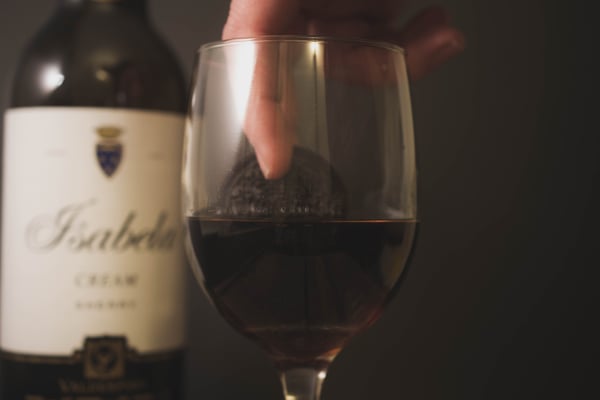Last week, I received my study material for Fine Vintage's WSET Level 3 certification course, which I'll be immersed in for six days. The textbook opens up with a foreward by Jancis Robinson, the author of two of my favorite, and most frequently referenced, books on wine. In it she compares the WSET program of today with the one she went through in the 1970's and one line in particular caught my attention, “...we spent a great deal of time studying the minutiae of Sherry production, something that is – quite unjustifiably in my view – not exactly the most sought-after aspect of wine education nowadays.”

Recently, during Happy Hour at The Chopping Block, I had a guest who told me they usually only liked sweet wines, and they laughed in embarrassment as their friends teased them. I see this kind of social interaction a lot, the sweet wine crowd often flinch after stating their opinion, because they know someone is going to criticize them for it. I was serving Spanish wine and asked if they had ever tried Sherry. As I moved the topic forward, I suddenly froze. In the year since taking WSET Level 2 I had forgotten nearly everything I learned about fortified wines, I never needed to call on it beyond telling people Sherry wasn't just for cooking and that it was a great pairing for dessert. I was missing fundamental information and after reading Robinson's forward I understood why.
So, as a refresher for myself and an introduction for those of you who have never tried it, here are the basics of Sherry. At a fundamental level there are three types of wine. Most people here either say, “red, white, and sparkling,” or “dry, sweet, and sparkling,” but the answer I'm looking for is, “still, sparkling, and fortified.”
A majority of the wine we consume is still wine, this accounts for pretty much everything including Bordeaux, Burgundy, Chianti, Rioja, etc. Sparkling wines are pretty self-explanatory and would include things like Champagne, Crémant, Cava, and Prosecco. The last group, the weird one, is comprised of things like Sherry, Port, and Madeira.
Fortified wine is a huge rabbit hole to explore, and even the most prodigious wine drinker may suddenly find themselves overwhelmed by the wave of new terminology and strange production methods. Each of the three major styles I mentioned above differ vastly. To know one provides no guarantee of understanding the others.
Sherry comes to us from the Southwest corner of Spain, on the Atlantic coast. Every bottle has a label featuring, “Jerez-X,” the name of the region it comes from, and its French and English pronunciations. The city of Jerez has been around for thousands of years and is one of the oldest wine-producing areas in Spain. Sherry has three centers that focus on maturation of the wine: Jerez de la Frontera, Sanlúcar de Barrameda, and Puerto de Santa María.
There are three grapes used to produce Sherry, either in fermentation or blending: Palomino, Pedro Ximénez, and Muscat of Alexandria. The process for making wine begins ordinarily enough, with the wine fermenting in steel tanks. From there the wine is fortified with a grape spirit, and the transferred to large oak barrels. A natural film of yeast, called flor, feeds on the sugar from the grape spirit, producing a thin film on top of the wine that protects it from oxidization. As the wine ages a portion evaporates, the winemakers add wine from the following harvest to make up for the portion that was lost, and to keep the flor alive. This process is known as the Solera system, it serves as the foundation of the Sherry maturation process. Through this system the flor can be kept alive for years, creating more complexity in the wine as each new harvest adds a level to the chain. From here there is a labyrinthine system of classification that takes factors such as residual sugar, oxidization, age of the flor, age of the wine, region of production, etc. into account, creating a complex network of names and styles.
Perhaps the of the most popular style is the one we sell here at The Chopping Block, Cream Sherry. As you might expect, there are a number of ways to make this sweet variety of Sherry. This is the point where I'm going to lose a lot of you, because, as I referenced above, sweet wines are almost always regarded as inferior when I speak to guests in the store. While it's true there are a lot of terrible sweet wine out there, a good one can transform the most mundane of desserts into something euphoric.
Don't believe me? What wine do you think would pair best with a Snickers bar? Have you ever dunked an Oreo into a glass of Sherry? If the answer is no, it's time to up your Oreo game.

If you want to learn about more conventional wine and food pairings, check our calendar for upcoming wine classes. Also, don't miss Food and Wine of Italy and Food and Wine of South America.











